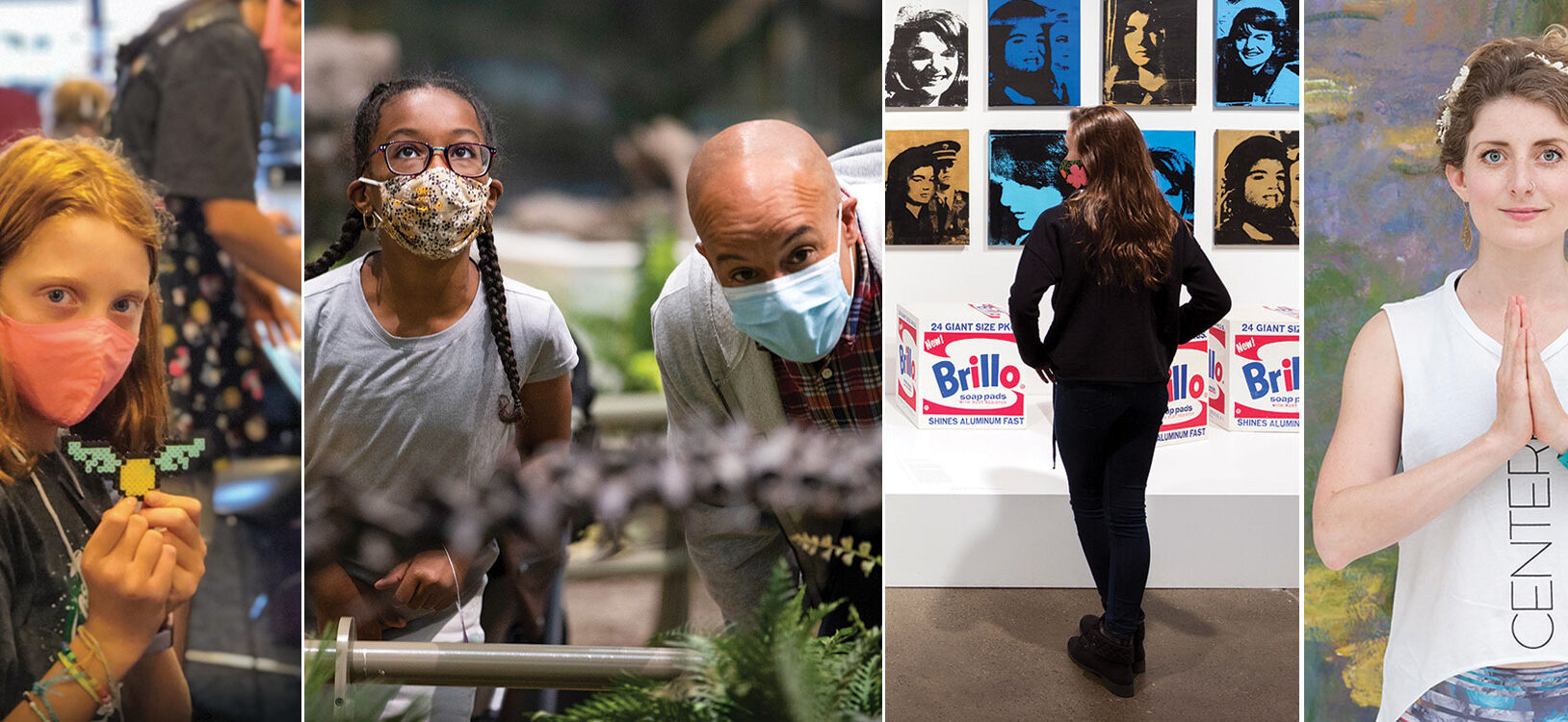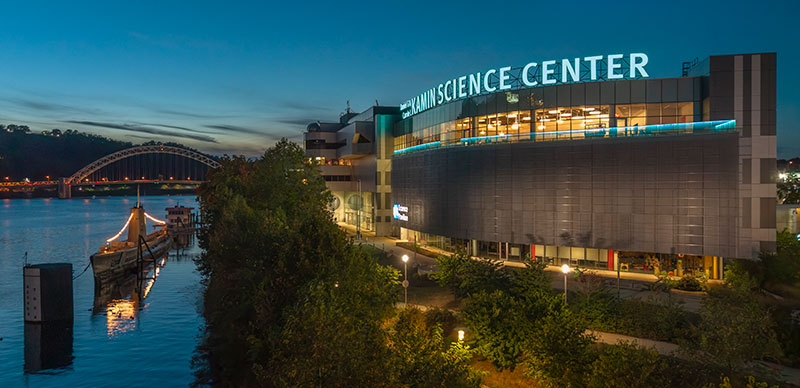Last summer, as the world was locked in the vise-like grip of COVID-19, Carnegie Science Center welcomed summer campers back to the North Shore, albeit in smaller numbers. In a post-camp survey, when asked what their child learned at camp, one grateful parent responded, simply: “That nothing is impossible.”
And, so it was in 2020. When faced with never-imagined challenges, the impossible somehow seemed possible for Carnegie Museums—thanks in no small way to your support. In both words and action, including $6.4 million donated to the 2020 Annual Fund, you lifted up your museums, just as your museums worked to lift up our extended museum community through virtual and on-site experiences.
“You guys saved our summer,” said another thankful parent of a camper, who went on to explain how her son had suffered emotionally during the COVID-19 lockdown. “Thank you so much. … My kid is back to the way he was before the lockdown. Healthy and happy thanks to all the fun activities that he got to do every day at camp!”
Early in the COVID-19 crisis, Carnegie Museum of Art spied a unique role it could play in the well-being of homebound art lovers. The museum created a virtual wellness series, including 30-minute meditations that pair an artwork with visualization exercises guided by a yoga professional. “On the days we have class, I feel less anxious about the week ahead and calmer around my family,” says Tiffany Merovich-Winter, a Carnegie Museums member who signed up for the sessions as one way to manage a chronic illness.
Teachers had their own set of daunting pandemic-induced challenges, when they were suddenly faced with the reality of mostly teaching online. The education teams at the four Carnegie Museums jumped into action to partner with area K–12 teachers and help them keep students inspired.
Museum of Natural History educators created a virtual field trip of the popular Dinosaur Armor exhibition, and they coupled it with a step-by-step video of how to make your own fossil cast at home. Ingomar Middle School teacher Christian Shane made use of another of the museum’s resources, its Educator Loan Program, to create backyard science lessons featuring the skulls of various mammals. He says he wanted his students to get outside and “notice things where they live that relate to what we’re covering in our remote lessons.”
Artist-educators at The Warhol launched Making It, a series of videos that teach Warhol’s artmaking techniques. But it was the museum’s online time capsule activity that proved especially meaningful to Kristen Johnson, an elementary school teacher in Bethel Park. Inspired by Warhol’s 610 cardboard boxes that he filled to the brim with leftover pieces of his life, students stamped their handprints onto paper, wrote about their feelings, and then stashed them away along with collected trinkets—such as a dog’s favorite toy or a Pokémon card—to be opened in 20 years. “Just as we’ll always remember when 9/11 happened, these kids will always remember the shutdown,” says Johnson.
In the fall of 2020, Science Center educators worked with area teachers to preserve the long-standing tradition—and the drama!—of the zany Chain Reaction Contraption Contest, which had 80 student competitors when it was held virtually in December. Christina Wukich, an educator at Penn-Trafford High School, says her kids were ecstatic to learn that the competition was still on. “We had this barrier, and the Science Center adapted.”
In December 2020, the images of Charles “Teenie” Harris—along with freshly developed lessons that encourage conversation and critical thinking—began traveling to Pittsburgh Public Schools (PPS) by way of short videos from Carnegie Museum of Art. PPS teachers are using the videos to get kids thinking and talking about Black history in Pittsburgh. Teenie’s photos give teachers “a space to talk about race and the role it plays in their lives and the lives of the children they are teaching,” says Nina Unitas, PPS’s coordinator of visual arts and design.
It was a year of adapting, trying to think outside the box (and the walls of your own house!), and coming together however possible—virtually and, when taking the proper safety precautions, in person. “It was great getting back to The Warhol, one of my favorite things in Pittsburgh, to break six months of self-imposed COVID isolation,” said one happy visitor. “It was the first indoor, non-grocery-store public space to which my wife and I had gone
since March.”
Tens of thousands of other “visitors” learned to appreciate experiencing the four Carnegie Museums virtually, and the respite those remote programs could provide during a scary and stressful period in world history. “Just very thankful for these events during the pandemic,” said one member in a follow-up survey. “Please PLEASE continue to hold them. It really feels like being at the museum, a place that I find comforting, stimulating, intellectually and emotionally rewarding.”




